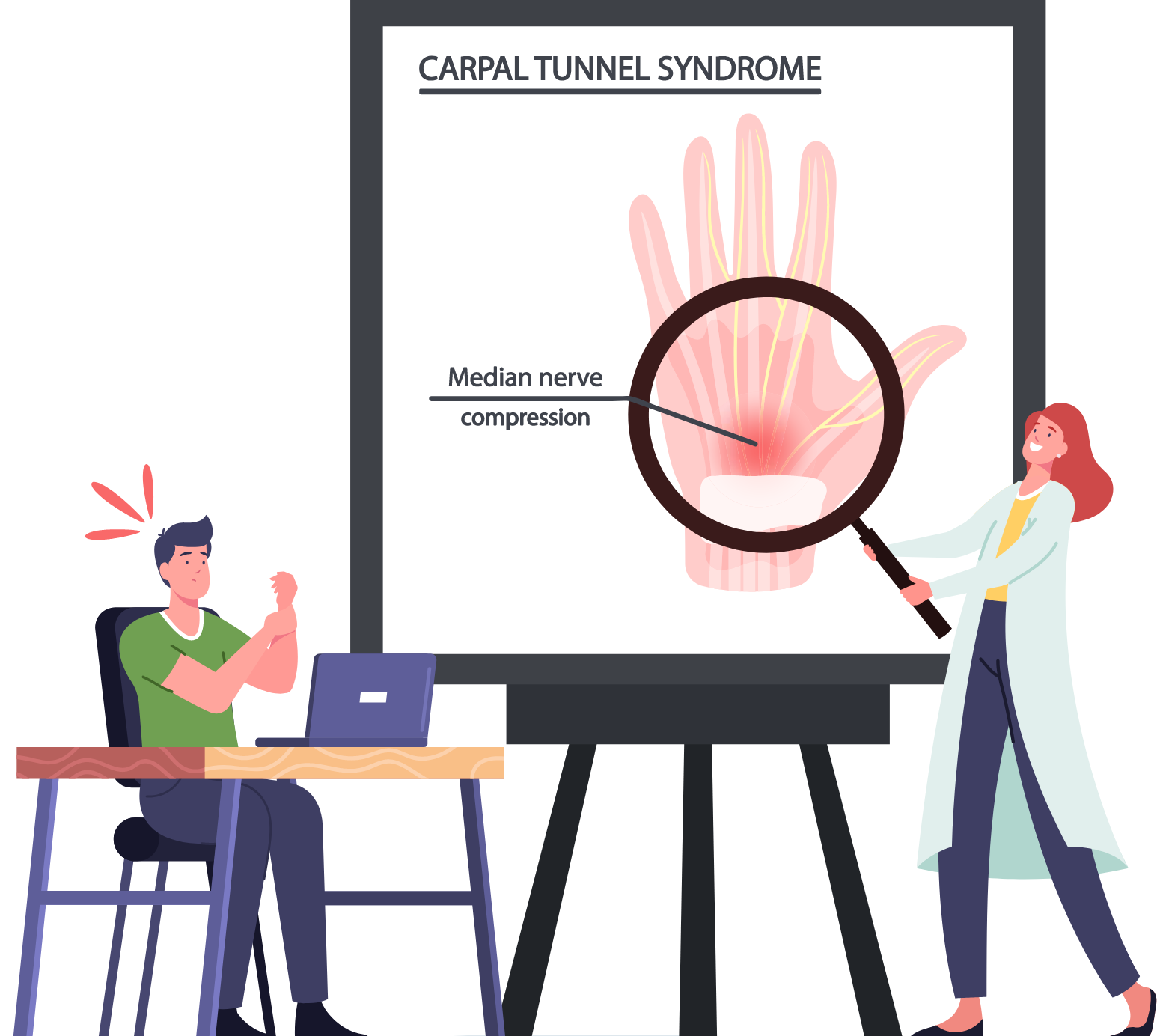Carpal Tunnel Syndrome

What is Carpal Tunnel Syndrome?
Carpal Tunnel Syndrome (CTS) is a common condition that affects the hand and wrist. It occurs when the median nerve, which runs from the forearm into the hand, becomes compressed or squeezed as it travels through the carpal tunnel in the wrist.
Who’s at risk for CTS?
CTS is more common in women than men and is more likely to develop in individuals who perform repetitive hand and wrist movements, such as typing or assembly line work. Other risk factors include obesity, pregnancy, and certain medical conditions such as diabetes and rheumatoid arthritis.
What causes CTS?
CTS is caused by compression of the median nerve in the wrist. This can be caused by a variety of factors, including repetitive hand and wrist movements, wrist fractures or dislocations, and certain medical conditions that cause inflammation or swelling in the wrist.
How does CTS start?
CTS often develops gradually, and the symptoms may initially be mild. However, over time, the symptoms may become more severe and interfere with daily activities.
What are the symptoms of CTS?
The most common symptom of CTS is pain and numbness in the hand and wrist, which may radiate up the arm. Other symptoms may include:
- Tingling or burning sensations in the fingers
- Weakness in the hand and wrist
- Difficulty gripping objects
- Swelling in the wrist
How is CTS diagnosed?
CTS is diagnosed based on a physical examination and the presence of characteristic symptoms. Diagnostic tests, such as nerve conduction studies and electromyography, may also be performed to confirm the diagnosis.
How can CTS be treated?
Treatment for CTS may include a combination of lifestyle changes, medication, and surgery. Lifestyle changes may include modifying hand and wrist movements and using wrist splints to reduce pressure on the median nerve. Medications, such as nonsteroidal anti-inflammatory drugs (NSAIDs) and corticosteroids, may be used to reduce inflammation and relieve pain. Surgery may be recommended for severe cases of CTS that do not respond to other treatments.
What complications may occur with CTS?
Untreated CTS can lead to permanent nerve damage and loss of hand function. It can also cause chronic pain and interfere with daily activities.
How can I prevent CTS?
Preventing CTS involves reducing the risk of developing the condition by taking frequent breaks during activities that require repetitive hand and wrist movements, maintaining good posture, and maintaining a healthy weight. If you have a medical condition that increases the risk of developing CTS, such as diabetes or rheumatoid arthritis, managing the condition can also help reduce the risk of developing CTS.
Long-term management of CTS
Long-term management of CTS may involve ongoing lifestyle modifications, regular monitoring of symptoms, and follow-up with healthcare professionals. If surgery is performed, rehabilitation and physical therapy may be recommended to help restore hand function.
What is recent research saying about CTS?
Recent research has focused on identifying new treatment options for CTS, as well as exploring the role of genetic and environmental factors in the development of the condition. There is also ongoing research into the long-term outcomes of different treatment options for CTS.
Where can I go for more information on CTS?
The American Academy of Orthopedic Surgeons and the National Institute of Neurological Disorders and Stroke provide up-to-date information on CTS, including diagnostic criteria, treatment options, and ongoing research.

